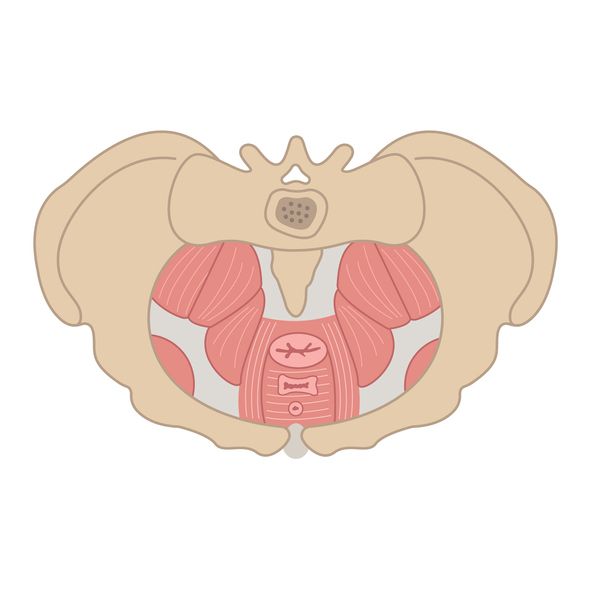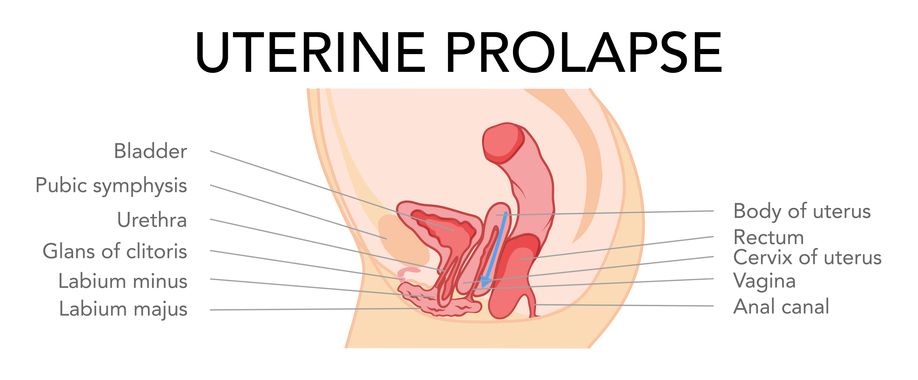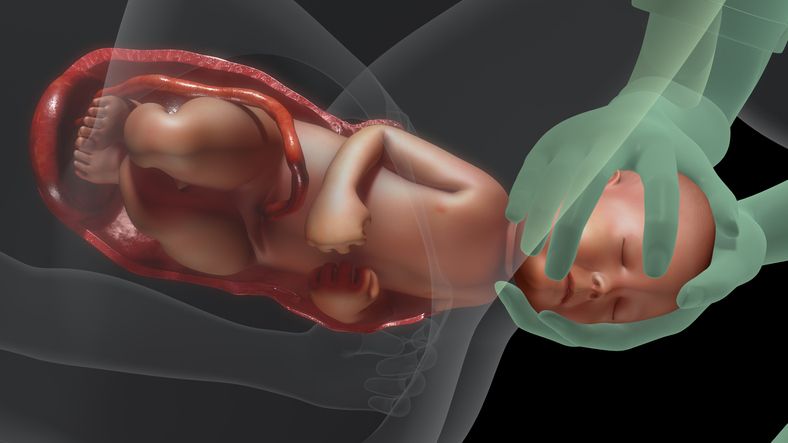- Home
- Trend
- Weight Loss Strategies
- Acne Tips
- Hair Health Information
- Blemish Removal Tips
- Acne Scar Removal Tips
- Muscle Building Techniques
- Intimate Care Tips
- Postpartum Intimate Care
- Eye Bags Wiki
- Tips for Face Slimming
- Secret of Permanent Hair Removal
- Breast Enlargement Tips
- Cure to Snoring
- Marionette Lines
- Skin-Tightening Secrets

免費體驗
BTL Emsella Treatment
1 Minute Self-Registration
Date should not be before minimal date
Pelvic floor healthy is important to all women, especially those over 50s. An unhealthy pelvis can lead to an inconvenient and embarrassing conditions suffered mostly by women, called pelvic organ prolapse. Pelvic organ prolapse affects nearly 3 in 10 women, causing great disturbances in daily lives. Do you wonder what leads to pelvic organ prolapse and if you're at risk? Here, we talk in detail the types, causes, and symptoms of pelvic organ prolapse, as well as its intervention and prevention.
1
What Is Pelvic Organ Prolapse?

The pelvic floor, resembling a hammock, supports the pelvic organs, such as the small intestine bladder, uterus, and rectum. Pelvic organ prolapse, a type of pelvic floor disorder, occurs when the pelvic muscles get saggy, failing to support the organs in place, causing them to bulge into the vagina.
2
How and When is Pelvic Organ Prolapse Developed?

Pelvic organ prolapse develops when the pelvic muscles and connective tissues weaken, usually due to factors like childbirth, aging, or obesity. Women over 50 are at risk, as they are aged and, compared to the younger female population, most likely to have already given birth. During childbirth, especially if you give birth to a large baby or have multiple vaginal deliveries, the pelvic muscles may stretch, increasing the risk of future sagginess. Aging also contributes, as hormonal changes impact the strength of pelvic tissues. Those with obesity are also more likely to experience pelvic floor issues, as the tissues stretch alongside the increase in body size.
- 6 Non-Surgical Ways to Tighten Your Vagina Naturally That No One Tells You About
- Living With Urinary Leakage: Practical Tips And Intervention For Everyday Management
- What is Incontinence? 13 At-Home Tips + 11 Treatments to Manage Incontinence for Women
- Find Your Feminine Fit: How to Select The Right Feminine Wash?
3
Different Types of Prolapse

Uterine prolapse occurs when the uterus drops, while bladder prolapse involves the descent of the bladder. Bowel prolapse, on the other hand, affects the rectum. Vaginal wall prolapse is when the walls of the vagina weaken and descend, which often leads to lack of support for the pelvic floor located over the vagina, cause it to also sag, increasing the chances of further pelvic floor prolapse. The severity of the prolapse varies, and symptoms depend on which organ is affected.
4
Symptoms of a Prolapse

When your pelvic floor weakens, it can lead to discomfort and various issues. Here are 7 symptoms that hint at possible pelvic organ prolapse.
Small Intestine, Bladder, Bowel, Vagina or Rectum Falling Out of Place
Pelvic organ prolapse manifests as the small intestine, bladder, bowel, vagina, or rectum falling out of their usual positions. This displacement can create a noticeable bulge in the pelvic area, impacting your lower torso to look abnormal. Also. you'll feeling pressure or heaviness, as if something heavy is being dragged down inside your pelvic region. This is due to the organs sliding downward. In more severe cases, the lower part of the vaginal canal can slip out of the vaginal opening, and the rectum may also protrude from the anus, both of which can be terrifying.
Heaviness in Pelvic Area
An unusual heaviness in your pelvic area can be a sign of pelvic organ prolapse. When the pelvic floor becomes too weak to support the pelvic organs, the drooping organs can lead to a constant feeling of heaviness, affecting your ability to move comfortably and engage in daily activities.
Urinary or Fecal Incontinence
One other important function of the pelvic floor is its control of the urine and fecal flow. Contracted pelvic floor holds in bodily wastes, while relaxing the muscle leads to relaxing of urinary tract and anus, leading to the passing of urine and fecal. Weakened pelvic floor muscles becomes saggy, losing the ability to maintain contracted. This means there will be unintentional leakage, which can be a very troubling and embarrassing affair.
Frequent urination
When the pelvic floor weakens, the bladder and urinary tract opening can't contract themselves that easily, leading to an urge to urinate more often.
Can’t Empty Bladder/Bowel Completely
Weak pelvic floor muscles cause the pelvic organs to slide and flop, meaning they can no longer maintain their upright positions. This situation can result in fecal and urine not being able to completely exit the body, giving you discomfort, more and longer bathroom trips, and potential health issues.
High Risk of Urinary Infections
When organs like the bladder shift out of place, it can create pockets where bacteria may accumulate, leading to infections. Glided-out urinary opening can also come into contact with bacteria, leading to urinary infections.
Painful Sex
Weakened pelvic floor weakens may impact the positioning of organs like the uterus or vaginal walls, causing pain or discomfort during sexual activity.

免費體驗
BTL Emsella Treatment
1 Minute Self-Registration
Date should not be before minimal date
5
Risk Factors for Pelvic Organ Prolapse

Here are 5 factors that may put you at risk of pelvic organ prolapse.
Vaginal Childbirth
Vaginal childbirth requires you to push out the baby, putting enormous strain on your pelvic floor. The delivery can stretch the vaginal canal. A relaxed vagina means less support for the pelvic floor muscles, leading to pelvic organ prolapse.
Aging
The natural aging process weakens connective tissues, making them less supportive. Most women begin experiencing weakening pelvic floor muscles after 50s, with many of them developing pelvic organ prolapse eventually.
Straining during Bowel Movements due to Constipation
Constipation often resulting in straining during bowel movements. The strain puts stress on your pelvic floor muscles, causing them to stretch and contract excessively, resulting in loosened muscles in the long term, potentially leading to pelvic organ prolapse.
Obesity
Obesity increases intra-abdominal pressure, straining the pelvic floor and contributing to organ prolapse. The increase in body size also stretch the pelvic floor muscles, causing them to lose their elasticity overtime.
Hysterectomy
While hysterectomy may be a necessary medical procedure, it alters the dynamics of pelvic support. The removal of the uterus can weaken the structures supporting other pelvic organs. If you've undergone a hysterectomy, it's essential to be mindful of potential pelvic floor issues.
6
Surgical Treatment for Pelvic Organ Prolapse

Severe pelvic organ prolapse requires one or more of the following surgical treatment options.
Hysterectomy
Depending on individual, hysterectomy can also be conducted to the relieve tension on the pelvic muscles from the uterus. This surgical procedure involves removing the uterus to address the prolapse. Pros include a permanent solution and relief from symptoms. However, recovery time varies, not to mention the drastic measure of removing the uterus.
Sacrocolpopexy
In this surgery, the surgeon attaches meshes to the pelvic organs, lifting them up and providing additional support. The pros include a high success rate and long-term effectiveness. However, it's a complex surgery with a lengthy recovery period. Potential side effects include infections, Inflammation, blood clots, injuries to the organs and painful intercourses.
Colporrhaphy
Colporrhaphy is a reconstructive procedure focuses on repairing the weakened vaginal wall, thus increasing its supportive function and improving pelvic organ prolapse. Still, this surgery carries the typical risk of post-treatment complications. Moreover, prolapse can reoccur after the surgery. Private area pain may also occur.
Vaginal Pessary
Not exactly a surgical procedure, a vaginal pessary is a ring-like device inserted into the vagina, pushed right up against the cervix to provide structural integrity, improving support for pelvic organs. It is popular due to its non-invasiveness and the immediate relief provided. Vaginal pessary also doesn't affect fertility, important for pre-menopausal women who wish to become mother. However, regular maintenance is needed for vaginal pessary, without which risk of infection increases. Also, some users report discomfort of having an external objects within the body, especially during the adjustment period. There is also a risk of the pessary slipping out of place, which is not only counterproductive, but also increases discomfort and the chance of infection.
7
Treatment Options for Mild to Moderate Prolapse + Early Prevention

Luckily, surgical treatments are not necessary if you have mild prolapse. The following options can help improve your condition. If you have yet developed prolapse—these steps may serve as prevention to better your pelvic health.
Pelvic Floor Exercises (Kegel)
Whether you have mild prolapse or simply want to strengthen your pelvic floor muscles, pelvic floor exercises (Kegel) are must-haves. Just like regular resistance-training helps build stronger muscles, Kegel exercises help develop pelvic strength for better support for the organs.
Here is how you can perform Kegel exercise: contract your pelvic muscles as if holding in urine, then slowly relax. Repeat these contractions regularly.
Pelvic Physical Therapy
The physical therapist guides you through exercises to strengthen and support your pelvic floor. These exercises are more advanced and targeted than the self-practice Kegel exercises, making pelvic physical therapy more needed for women with mild prolapse instead of those who simply want to better pelvic floor health. Still, while ensuring you're addressing your specific pelvic floor conditions, pelvic physical therapy takes a long time to work.
Lifestyle and Diet Changes
Consume plenty of fiber-rich foods daily to improve bowel movements, reducing the the chance of constipation, thereby avoiding pelvic organ prolapse due to straining. Pros include overall well-being and reduced risk of prolapse progression. However, commitment to lifestyle adjustments is crucial. By adopting these preventive measures, you contribute to the long-term health of your pelvic organs, minimizing the likelihood of developing or exacerbating mild to moderate pelvic organ prolapse.
8
No Surgery, No Insertion, No Recovery—Improve Your Pelvic Floor Health Right Now: BTL Emsella Treatment

Do you have mild pelvic organ prolapse? Do you simply want to improve your pelvic floor health? BTL Emsella Treatment is perfect for you!
This treatment emits high-intensity focused electromagnetic energy at the pelvic floor muscles and vaginal walls, inducing powerful muscle contractions. Akin to strength training, the contractions strengthen the pelvic floor muscles, improving muscle control. The energy also stimulates collagen growth, effectively thickening the vaginal walls, thus restoring tight, heathy and moist vaginal walls. Together, the rejuvenated pelvic floor muscles and vagina are able to better support the pelvic organs, improving pelvic organ prolapse.
BTL Emsella Treatment can improve your daily and sex life quality with just 4 to 8 sessions! This non-invasive treatment requires no undressing, incision, injection, insertion or medication: simply sit on the equipment chair for 30 minutes to enjoy the treatment session. The procedure is painless and comfortable, the most you will feel are tightening contractions in your pelvic area. No recovery period is needed, allowing you to return to your busy routine conveniently!
Don't miss your chance to try BTL Emsella Treatment for free! Reduce embarrassment, improve daily life, and reinstall enjoyable sex life right now!

免費體驗
BTL Emsella Treatment
1 Minute Self-Registration
Date should not be before minimal date
FAQ

Can I just ignore my pelvic organ prolapse condition?
Ignoring pelvic organ prolapse is not advisable. While mild cases may not cause immediate issues, neglecting the condition could lead to worsening symptoms and complications.
What can I expect during the recovery period after a surgery for pelvic organ prolapse?
The recovery period after pelvic organ prolapse surgery varies. Expect a few weeks of restricted activities and follow your doctor's post-operative instructions carefully to optimize healing. It's essential to attend post-surgery check-ups to monitor progress and address any concerns promptly.
Will frequent sex life result in pelvic organ prolapse?
Frequent sexual activity itself doesn't directly cause pelvic organ prolapse. However, factors like childbirth and aging can contribute. Maintaining pelvic health through exercises and a healthy lifestyle can minimize the risk.
Is vaginal pessary safe?
Vaginal pessaries are generally safe when used under professional guidance. However, some individuals may experience minor discomfort or irritation. Regular check-ups with a healthcare provider ensure proper fitting and address any concerns.
Can pelvic organ prolapse occur to men and younger women?
While pelvic organ prolapse is more common in older women, men and younger women can also experience it. Factors like obesity, chronic coughing, or heavy lifting can contribute. Consult with a healthcare professional if you experience symptoms, regardless of age or gender, for proper evaluation and guidance.








